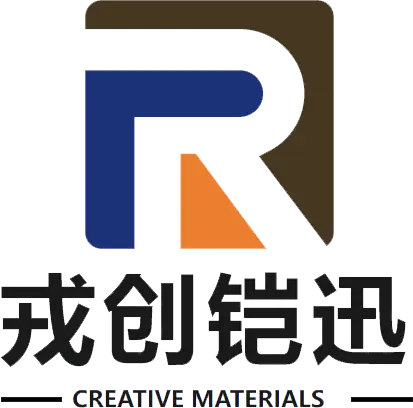Silicon carbide (SiC) electronics have emerged as a groundbreaking technology that is poised to revolutionize various industries by enhancing efficiency, performance, and sustainability. As the demand for higher power density, energy efficiency, and thermal performance continues to increase, SiC electronics provide a robust solution to meet these challenges. This innovation is not only reshaping the landscape of power electronics but is also paving the way for advancements in electric vehicles, renewable energy systems, and smart grids.

In recent years, the top innovations in SiC electronics have showcased remarkable potential, transforming the future of technology across multiple sectors. From cutting-edge power modules that drive electric vehicles more efficiently to high-frequency converters that optimize renewable energy integration, the impact of SiC technology is significant. These developments not only enhance operational capabilities but also contribute to a more sustainable energy future. The surge in SiC usage highlights the need for industries to adapt and innovate, showcasing the versatility and advantages of this exceptional material in various applications.
This article will delve into the top five innovations in SiC electronics that are leading the charge towards a technological transformation, emphasizing their implications for energy efficiency and performance in modern applications. As we explore these breakthrough advancements, we will gain insight into how SiC electronics are setting the stage for a smarter and more sustainable tomorrow.
Silicon carbide (SiC) technology is rapidly changing the landscape of energy efficiency in electronics. By enabling devices to operate at higher voltages, temperatures, and frequencies, SiC semiconductors significantly reduce energy loss and improve efficiency, ultimately paving the way for more sustainable technology solutions. A report by Grand View Research indicates that the SiC market is projected to reach $5.2 billion by 2027, growing at a compound annual growth rate (CAGR) of 20.3%. This growth is driven by a surge in demand for energy-efficient power electronics across various sectors, including automotive, renewable energy, and consumer electronics.

The advancements in SiC technology not only enhance performance but also facilitate the integration of renewable energy sources. For instance, SiC MOSFETs are now a standard in solar inverters, providing superior efficiency and thermal management as compared to traditional silicon devices. According to a study from the International Energy Agency, the integration of SiC into power electronics can improve the efficiency of energy conversion systems by up to 30%. This increase in efficiency is crucial for meeting global energy targets, allowing for a more stable and resilient energy infrastructure while reducing the carbon footprint associated with electricity consumption.
Silicon carbide (SiC) technology is revolutionizing power electronics, paving the way for enhanced efficiency and performance in various high-demand applications. As industries strive for improved energy efficiency, SiC semiconductors are becoming indispensable due to their ability to operate at high voltages and temperatures while minimizing energy loss. According to a report by Market Research Future, the SiC power devices market is projected to reach approximately $2.8 billion by 2025, growing at a CAGR of around 29% from 2019. This remarkable growth is driven by the increasing adoption of electric vehicles (EVs) and renewable energy systems, where performance and durability are crucial.

In high-performance applications, SiC devices demonstrate significant advantages over traditional silicon counterparts. For instance, in electric vehicles, SiC MOSFETs can reduce switching losses by up to 50%, resulting in higher efficiency and reduced thermal management requirements. Furthermore, research from Yole Développement indicates that the implementation of SiC technology can enable compact system designs, leading to weight and size reductions in power electronics, which is critical for aerospace and automotive sectors. As companies continue to integrate SiC into their power systems, the potential for innovation and performance improvements in technology grows increasingly promising.
The global Silicon Carbide (SiC) devices market is on a remarkable growth trajectory, expected to expand from $3.21 billion in 2024 to an impressive $21.27 billion by 2032, reflecting a compound annual growth rate (CAGR) of 26.7%. This surge is primarily fueled by the increasing demand for SiC-based devices in electric vehicles (EVs) and renewable energy applications. As the automotive industry increasingly adopts electric and hybrid vehicles, the need for efficient power electronics has never been greater, highlighting the role of SiC in enhancing energy conversion efficiency and thermal performance.
Moreover, the power electronics market is set to capitalize on emerging trends in both renewable energy integration and EV technologies, with advanced materials such as SiC and GaN leading the charge. Innovations in power semiconductor technology are pivotal for the development of high-performance traction inverters, which significantly enhance the powertrain efficiency in electric vehicles. This evolution not only supports the transition towards greener energy sources but also reinforces the strategic importance of SiC devices, as the industry gears up for a sustainable future marked by reduced carbon emissions and increased energy efficiency.
The advent of Silicon Carbide (SiC) technology is pivotal in the evolution of communication systems, particularly as we enter the era of 5G and beyond. SiC, a key component among wide bandgap semiconductors, is projected to enhance the speed and reliability of wireless communication. According to industry analyses, the global SiC semiconductor market is anticipated to grow from approximately $429.3 million in 2022 to $1.46 billion by 2029, indicating a robust compound annual growth rate (CAGR) of 19.1%. This surge underscores the escalating demand for high-performance devices necessary to support the burgeoning 5G infrastructure.
As 5G technology expands, the capability of SiC-based devices to handle higher frequencies and power levels will be crucial. These devices outshine traditional silicon alternatives in various performance metrics, making them the preferred choice for applications in telecommunications, electric vehicles, and renewable energy solutions. The increasing deployment of 5G networks is set to bolster the need for advanced semiconductor technologies, with the RF device market alone expected to reach $51.3 billion by 2024. This transition not only fosters faster communication but also paves the way for innovations in Internet of Things (IoT) applications, thereby reshaping how technology integrates into daily life.
| Innovation | Description | Impact on 5G | Future Potential |
|---|---|---|---|
| High-Efficiency Power Devices | Silicon carbide (SiC) based power devices that enhance energy efficiency in communication systems. | Reduction of energy loss in 5G infrastructure, enabling higher throughput. | Further miniaturization and operational efficiency in future networks. |
| Advanced RF Components | Innovations in RF components using SiC for improved signal integrity. | Enhanced signal clarity and coverage for 5G services. | Potential applications in 6G and next-gen wireless technologies. |
| Heat Management Solutions | SiC materials that improve thermal conductivity in electronic devices. | Allows 5G equipment to operate efficiently at high power. | Supports evolving demands of future communication networks. |
| Miniaturized Components for IoT | Compact SiC solutions tailored for IoT devices. | Improves connectivity and performance of IoT applications over 5G. | Key enabler for smart cities and future IoT ecosystems. |
| Integration with AI Algorithms | SiC devices optimized for AI processing, enhancing decision-making capabilities. | Supports AI-driven applications over 5G for real-time analytics. | Paves the way for intelligent communication systems in the future. |
Silicon Carbide (SiC) technology is rapidly reshaping the landscape of consumer electronics and the Internet of Things (IoT). As the demand for more effective, smaller, and powerful devices grows, SiC's unique properties enable advancements in areas such as energy efficiency, thermal management, and high-frequency performance. This transformation not only improves product functionality but also extends battery life in portable devices, a critical factor for consumer satisfaction.
Tips: When evaluating consumer electronics for your needs, consider products with SiC components. These devices often offer enhanced performance and longevity compared to traditional silicon alternatives. Additionally, stay informed about the latest SiC solutions, as they may soon become the norm in high-performance devices.
With the ongoing integration of SiC technology in IoT applications, we are witnessing a new paradigm of connectivity and intelligence. SiC's capability to operate at higher voltages and temperatures makes it ideal for powering smart appliances and industrial IoT devices, ensuring they are more reliable and less prone to failure. This innovative shift is paving the way for smarter homes and advanced industrial automation.
Tips: For those venturing into IoT, prioritize investing in SiC-enabled devices to maximize operational efficiency and reduce maintenance costs. Early adopters can gain a competitive edge by leveraging the benefits of this cutting-edge technology.






